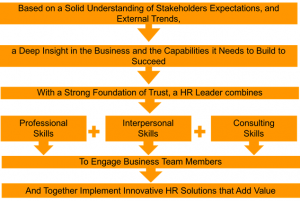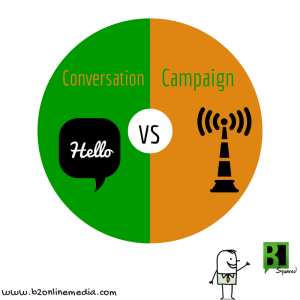It’s time to think seriously about proactively adding prospective personas and then updating these with real people you’re interacting with.
In an article from a couple of years ago, Hasse Jansen curated 33 statistics on why your marketing organization should employ buyer personas to drive better demand gen results. Back in 2016 when he was writing, 44% of B2B marketers had already implemented personas and a full 83% expected they’d be using personas in the near future. Therefore, as of now, practically every one of us is applying persona thinking in some form or another, so it’s a good time to look at how to avoid some common mistakes and improve on the approaches you already have in place.
Why do we have personas in the first place?
B2B marketing can be surprisingly complex. One peek into any company’s CRM system can be pretty overwhelming. In the presence of so much diverse information, personas provide a framework that can help us make better sense of all the data and take more useful action on it. Persona work helps drive efficiency because it focuses us on truly important groups according to their roles, responsibilities and more. Personas help drive effectiveness, especially in one-to-many executions, because they stimulate us to create messaging and content that is more relevant to buyers in our markets.
Personas and ABM
At its core, ABM is about selecting a group of accounts based on a rigorous examination of your company’s potential revenue from them and then making a commitment to do better at pursuing a larger share of that potential. For marketers and sellers alike, this usually involves working hard at better understanding the companies on your ABM list and better addressing their needs – certainly with respect to how you communicate and interact with them and also in the solutions you propose. In ABM, you are necessarily working hard at becoming as relevant as you can possibly be. Your efforts are more targeted, more personalized, less based on models built for efficiency. And that’s exactly why as you progress in ABM, you’ll want to move beyond the limits of persona-based approaches. Here are five areas where opportunities exist to grow ABM program performance by moving beyond your basic persona framework.
5 ways to grow ABM performance by moving beyond your basic persona framework
Apply market insights to persona building
My company practices exclusively in the enterprise technology space. Since these markets are particularly dynamic, market insight is all the more critical to more effective marketing and selling, especially to an identified set of accounts.
If you are proposing a new use case for your technology, at a minimum, you’ll need to check whether or not your persona framework should be tweaked. If you’re impacting new processes, you could easily be impacting different roles from those you’ve traditionally targeted. You’ll need evolved messaging and you’ll need changes to your sales motions. These changes may be small, but if you neglect them up front, a lack of early momentum could cause significant problems for the success of your idea. To mitigate these risks, your marketers need to pay close attention to how prospects are thinking about solving their challenges within the categories you seek to break into. Do this by studying the conversations and information flows occurring around your target use cases. See what people are reading; what granular key word strings they’re using; what connections they’re probing between what they already have interest in and that which you’re proposing they consider.
When you’re introducing an entirely new concept to the market, insight grows in importance – and because the topic is new, you’ll have to work that much harder to find it. No matter how brilliant your breakthrough, most people gravitate to the familiar. Markets are no different. In fact, there’s a good chance that your breakthrough is so new that no substantive, identifiable “market” exists in a “targetable” way. Likewise, a persona framework built on historical examples can’t get you very far on your path to high-performing ABM. To make progress here, you’ll have to double down on trying to understand facets of your potential market where momentum could be gained. Few people are searching for what you do, because they don’t understand it enough to see the connection to their needs. But they will be studying areas where you make a difference – so start to target and engage them there. Discover the new personas that should be interested in you by understanding the upstream and downstream areas impacted by the changes you’re bringing.
Evolve your ABM list by expanding ‘account’ personas
While we usually think of personas as applying to the roles and responsibilities of people, the same idea can be useful in describing and distinguishing between different companies in your total addressable market. If you’ve already done the good work of defining your ideal customer profile, you’ve created a form of persona framework – applied here instead to the companies you want to include for specialized ABM treatments. Yet as we’ve seen with personas and people, here as well, it’s easy to fall prey to too much rearview-mirror thinking – developing an ABM list based on successes of the past rather than what’s best going forward. Without change, this will reduce your ABM success.
Here’s an over-simplified example: In the enterprise technology industry, practically every solution provider wants to target companies in the top 1,000, because “that’s where the money is.” But if you’re marketing something new, there’s a good chance that you really don’t know where pockets of momentum are most likely to pop up. Instead of limiting yourself to an ABM list comprising the usual suspects, construct a process that allows valuable targets to be added to the program as they become more visible and understandable to you.
Beware of overweighting persona frameworks toward typical titles and targeting
Experienced business people have developed useful instincts. Over the years, they’ve honed their approaches and optimized their pitches. While it’s important to leverage institutional learning into the creation of a persona framework, always stay cognizant of the fact that the learning embedded in this insight reflects both historical and functional (role-based) preferences and biases. To put it simply, persona targeting inputs commonly reflect who was critical at the end of deal processes rather than when they started or who is actually using the solution on a daily basis. We commonly experience persona frameworks that are overly weighted towards deal makers in the form of targeting list specifications. If most deals have to involve a business decision-maker (BDM “director or above”), the CFO, the CTO, et al, why not go after them and only them? I’m not arguing here that you shouldn’t develop relevant content for those personas. I’m saying that if you limit yourself to them, you’re putting the success of your own efforts at risk. While you need to influence senior people, targeting them directly is the hardest way in.
At best, the usual suspects are table stakes. If you’re marketing a new use for your tech or a whole new paradigm, it’s important (especially early on in the process) to make your case to the people more directly impacted by the benefits you bring. Instead of narrowing your targeting based on expert inputs, you should be broadening your target personas and expanding your list specifications. The goal is to enable your marketing to probe for interest that you don’t yet fully understand.
Always remember that while marketing and sales persona frameworks will certainly overlap, they’re rarely 100% identical. Marketing has the responsibility for positively influencing as many people as it can whereas sales
Understand that personas change. In fact, they might not even exist.
Here are two examples where classic persona thinking can limit marketers’ ability to make progress against their company’s business objectives:
- New intersections creating important net-new personas – Like in the field of medicine, as enterprise technology advances, expertise grows more and more specialized. From a persona targeting perspective, for a time, that seemed to make things a little bit easier for the marketer: if you sold a security product, you just targeted the security guys. Now, however, just as in medicine, organizations have realized that solutions targeting one type of issue can have important implications in other areas. To adapt, companies are emphasizing the broadening of skill within their technology teams. New titles are being created reflecting cross-pollination between areas. To be maximally effective, therefore, a vendor’s persona frameworks need to accommodate this new reality.
- Big, exciting ideas in search of fans – Companies get started because their founders see real possibilities where others notice little opportunity at all. Then they make progress by finding a few early-adopter advocates of the same idea. Things get more difficult, however, when they start to push up against the mainstream. While it would be great if they could simply project the personas of their early adopters on the market at large, this is rarely easily done because it’s still too early for either the market or the relevant roles to be clearly articulated. Take big ideas like the Internet of Things (IoT) or digital transformation, for example. It’s still too early yet to be able to put together a powerful persona framework. Instead, a marketer should be focused on educating markets broadly and evaluating engagement evidence towards establishing a pathway to repeatable, scalable success. Rather than trying to find personas that don’t yet exist at any useful scale, it’s out of investigating those pathways that newly arising useful personas will eventually become apparent.
Lead and opportunity management: Transition to real people
ABM has shined a spotlight on the continuing challenges most companies face that start with targeting and flow from lead management all the way down the pipeline. It’s become more and more obvious that on the one hand, companies are underinvesting in the potential of accounts on their ABM lists, and on the other, underperforming in capturing the demand they do actually pursue there. These observations intersect with persona thinking on at least three fronts:
- The most obvious of these is similar to my list specification example: If all the potential buying centers in an account are not mapped into your CRM, then you have much less chance of influencing and engaging them. This is particularly obvious if you are looking to extend your use cases into new areas within existing accounts.
- And once you’ve populated all the roles in CRM, you need to adjust your scoring, your MQL definitions
and your lead tracking and follow-up processes so that upstream targeting changes are not undermined elsewhere in your process. - Furthermore, as we’ve discussed, whenever you’re pushing into new areas, there’s an even greater need for new insight and learning. This is exactly where
an evolution in your approach to opportunity management – like SiriusDecisions’ Demand Unit Waterfall concept – can deliver tremendous benefits.
When you look to promote new use cases or an entirely new concept, you can’t fairly claim to really understand how opportunities will appear in and move through your pipeline. If, as is true of most companies, you’re not capturing much information at all (or you’re not able to easily extract it) about the people involved in the selling interactions as they take shape, you won’t be able to analyze and learn as quickly as you should about areas of progress and points of failure. If you’re working on this kind of challenge, now is the time to think seriously about first proactively populating your opportunities with prospective personas and, going forward, updating these with the real people who you are discovering and interacting with. The sooner you can introduce some form of this concept, the faster you will be able to capitalize on new insight as you generate it. At a minimum, this will help you understand your progress and challenges. Going forward, it will help grow account penetration, accelerate product ramp times, and optimize investments up and down the customer lifecycle management continuum.
Opinions expressed in this article are those of the guest author and not necessarily Marketing Land. Staff authors are listed here.
Marketing Land – Internet Marketing News, Strategies & Tips
(48)
Report Post





